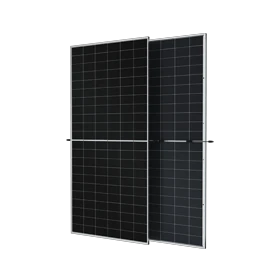Innovative Transparent Solar Panels for Energy Efficiency and Aesthetic Design
The Future of Energy Transparent Solar Panels
As the world continues to grapple with the urgent need for sustainable energy sources, innovations in solar technology are paving the way for new possibilities. Among these innovations, transparent solar panels stand out as a revolutionary concept that could significantly impact how we harness solar energy in our everyday lives. Combining the need for energy efficiency with aesthetic considerations, transparent solar panels have the potential to transform buildings and urban environments into self-sustaining energy systems.
Transparent solar panels are designed to allow light to pass through while simultaneously capturing solar energy. This dual functionality opens up an array of applications, particularly in urban architecture. Imagine skyscrapers and residential buildings that not only complement the skyline but also generate their own electricity. Unlike traditional solar panels that are typically bulky and obtrusive, transparent variants can be integrated into windows, façades, or even smartphones, making them an attractive option for architects and designers looking to maintain the visual appeal of structures while embracing renewable energy.
One of the most compelling applications of transparent solar panels is in commercial buildings. In metropolitan areas with limited space for traditional solar installations, transparent panels can be seamlessly incorporated into glass surfaces. This not only enhances the energy efficiency of buildings but also reduces reliance on conventional power sources. For instance, a modern office building could use transparent solar panels in its windows to harness sunlight throughout the day, reducing energy costs and minimizing its carbon footprint.
Moreover, the technology behind transparent solar panels continues to evolve rapidly. Researchers are exploring various materials, including organic solar cells and perovskite solar cells, to enhance transparency without compromising energy efficiency. Recent advancements have shown that these panels can achieve remarkable levels of efficiency, making them not only viable but preferable in specific applications. As research progresses, we can expect the efficiency of transparent solar panels to improve, further solidifying their role in future energy systems.
transparent solar panel

Another area where transparent solar panels can make a significant impact is in the realm of transportation. Imagine vehicles that utilize transparent solar technology in their windows and rooftops to generate power on the go. This concept is not merely a dream of the future; several companies are already developing prototypes that integrate solar capabilities within the vehicle's structure. By doing so, electric vehicles could extend their range and reduce the frequency of charging, making them more practical for everyday use.
The integration of transparent solar panels also presents opportunities for innovation in consumer electronics. Smartphones, tablets, and laptops could be designed with transparent solar technology, allowing consumers to charge their devices using sunlight while on the move. This could lead to a significant reduction in the reliance on electricity and the overall energy consumption trends associated with these devices.
Yet, despite the promise that transparent solar panels hold, there are challenges to overcome. One major hurdle is cost. Currently, the production of transparent solar panels is more expensive than traditional solar technologies, which may hinder widespread adoption. However, as technology improves and manufacturing processes become more efficient, the costs are likely to decrease, making transparent solar panels more accessible to consumers and businesses alike.
In conclusion, transparent solar panels represent an exciting frontier in the green energy landscape. Their ability to blend seamlessly into existing structures while generating power offers a unique solution to the challenges of urban energy consumption. As advancements continue in materials and manufacturing techniques, we may soon see transparent solar panels playing a pivotal role in our pursuit of sustainability. By harnessing the power of the sun in innovative ways, we move one step closer to creating a renewable energy future that is not only efficient but also aesthetically pleasing. The future is bright—and transparent.
-
Unlocking Energy Freedom with the Off Grid Solar InverterNewsJun.06,2025
-
Unlock More Solar Power with a High-Efficiency Bifacial Solar PanelNewsJun.06,2025
-
Power Your Future with High-Efficiency Monocrystalline Solar PanelsNewsJun.06,2025
-
Next-Gen Solar Power Starts with Micro Solar InvertersNewsJun.06,2025
-
Harnessing Peak Efficiency with the On Grid Solar InverterNewsJun.06,2025
-
Discover Unmatched Efficiency with the Latest String Solar InverterNewsJun.06,2025







